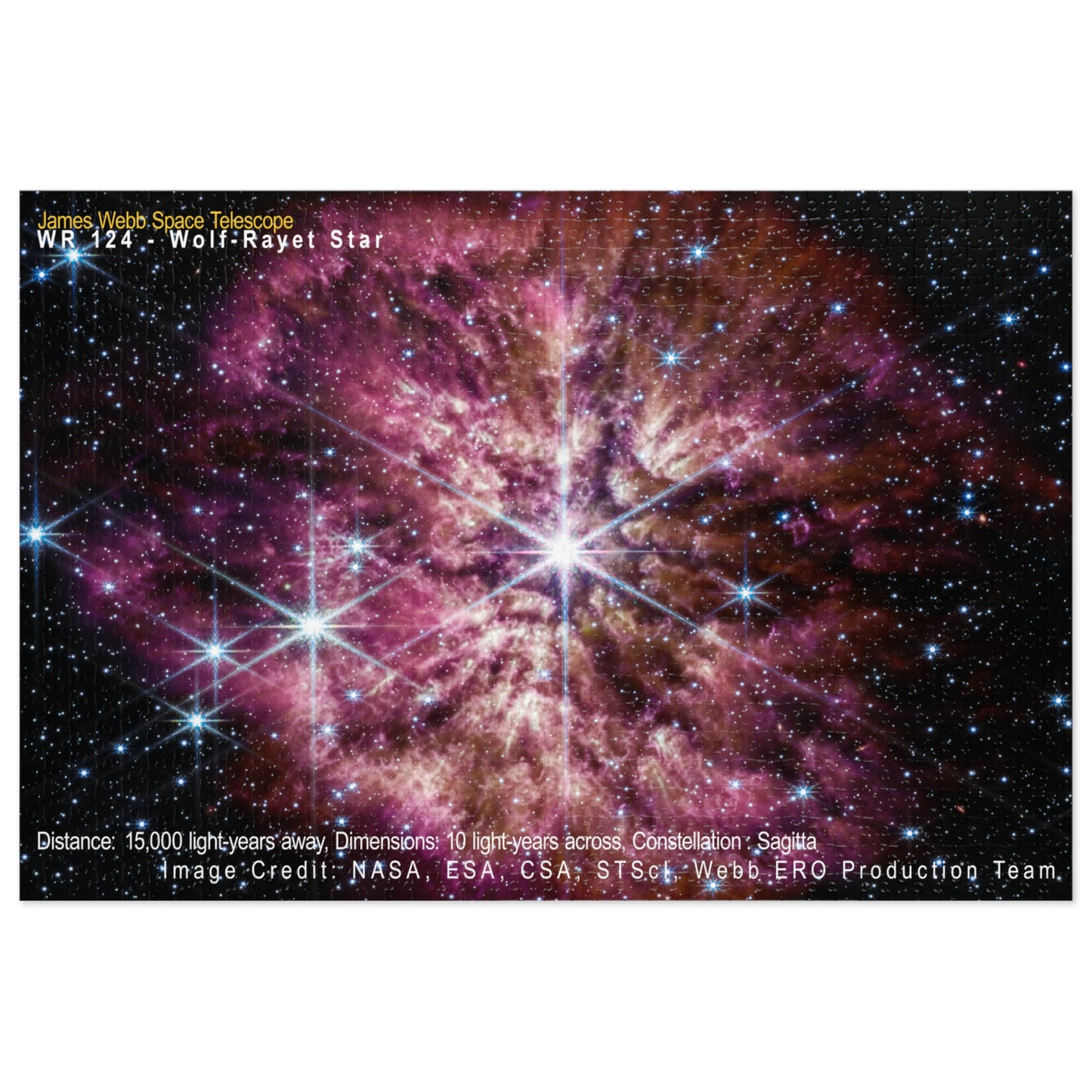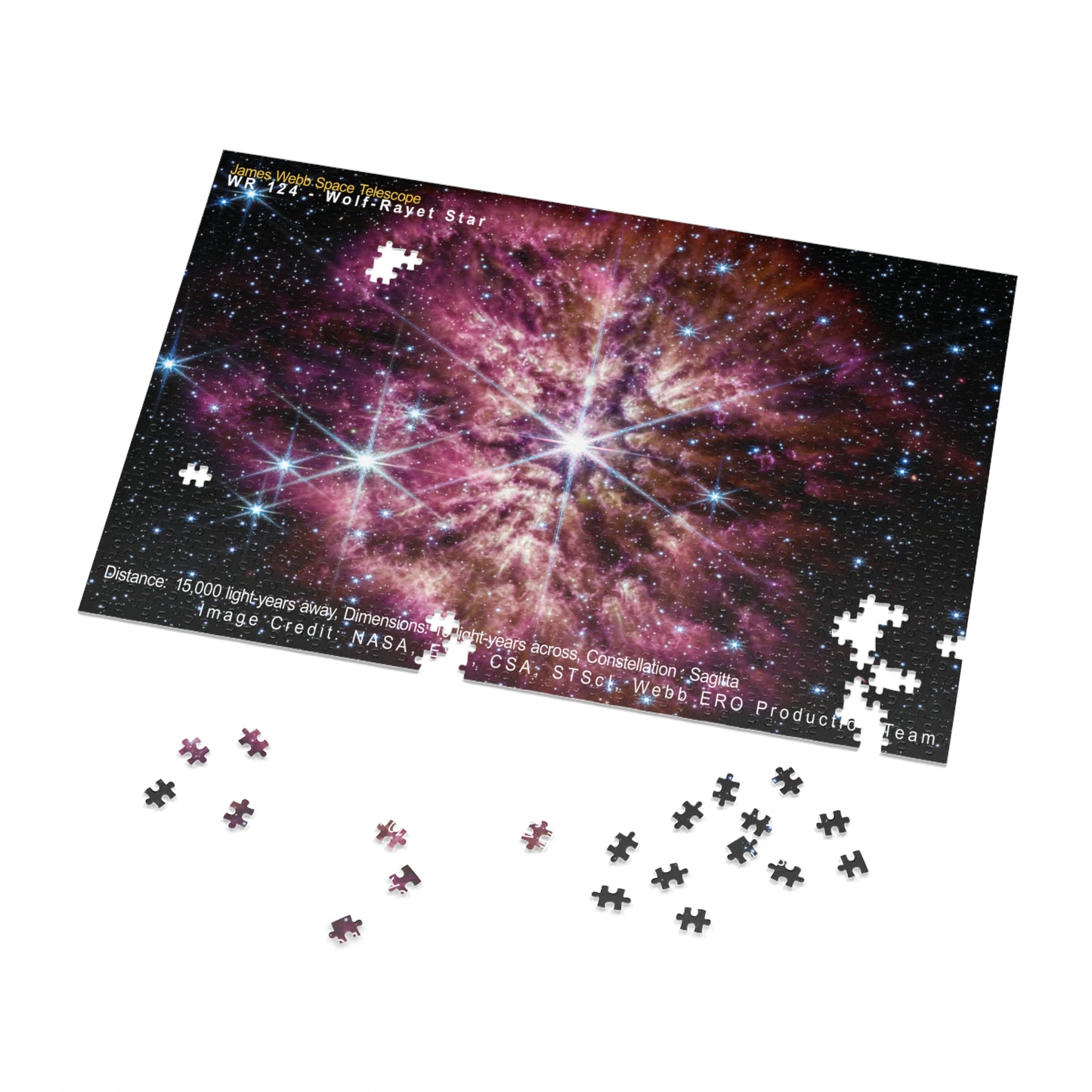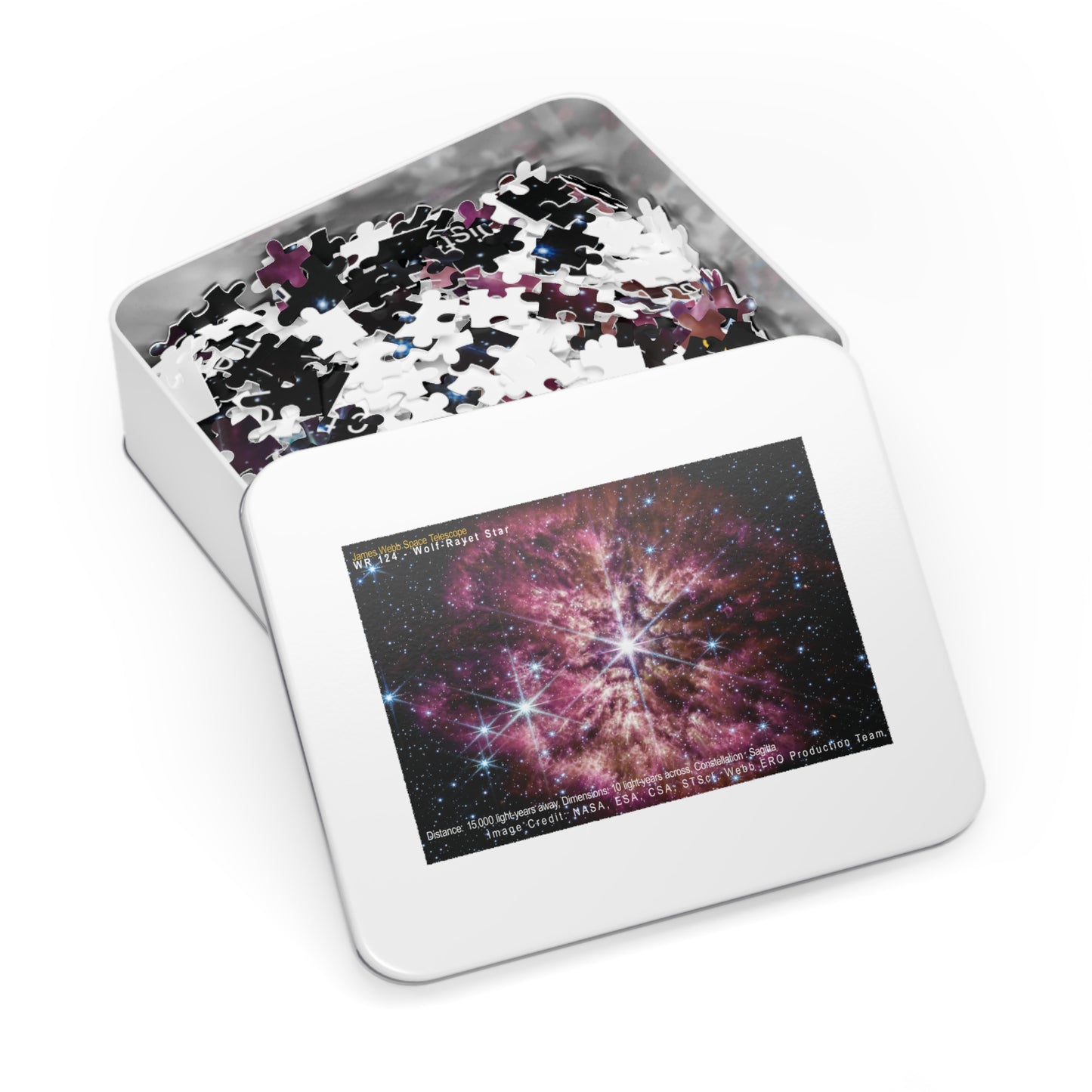WR 124, Jigsaw Puzzle
WR 124, Jigsaw Puzzle
Couldn't load pickup availability
Unveiling the Mysteries of the Cosmos: Dive Deep with Our Galaxy Puzzles!
Embark on a challenging and rewarding journey with stunning images.
A Universe of Wonder: Lose yourself in breathtaking views of distant galaxies, nebulae, and star clusters captured by the most powerful telescope ever built.
A Challenge Worthy of Any Stargazer: Choose from various puzzles to test your skills.
Sharpen Your Mind: As you piece together the cosmos, you'll develop problem-solving abilities, logical reasoning, and concentration.
Become an astronaut of the mind and explore the universe from the comfort of your home!
WR 124:
The luminous, hot star Wolf-Rayet 124 (WR 124) is prominently featured at the center of the James Webb Space Telescope's composite image, which combines near-infrared and mid-infrared wavelengths of light. The star displays the characteristic diffraction spikes of Webb's Near-Infrared Camera (NIRCam), caused by the physical structure of the telescope itself. NIRCam effectively balances the brightness of the star with the fainter gas and dust surrounding it. At the same time, Webb's Mid-Infrared Instrument (MIRI) reveals the nebula's structure.
Background stars and background galaxies populate the field of view, peeking through the nebula of gas and dust that has been ejected from the aging massive star, spanning 10 light-years across space. A history of the star's past episodes of mass can be read in the nebula's structure. Rather than smooth shells, the nebula is formed from random, asymmetric ejections. Bright clumps of gas and dust appear like tadpoles swimming toward the star, with tails streaming out behind them, blown back by the stellar wind.
Constellation: Sagitta
Dimensions: Image is about 2.2 arcminutes across (10 light-years)
Distance: 15,000 light-years
Exposure Dates: 2 June and 10 June 2022
Share






